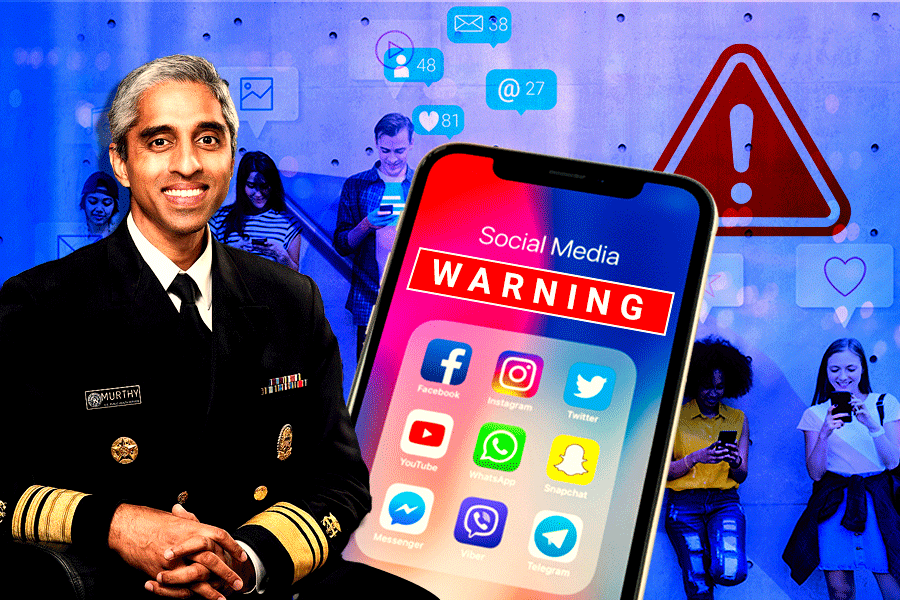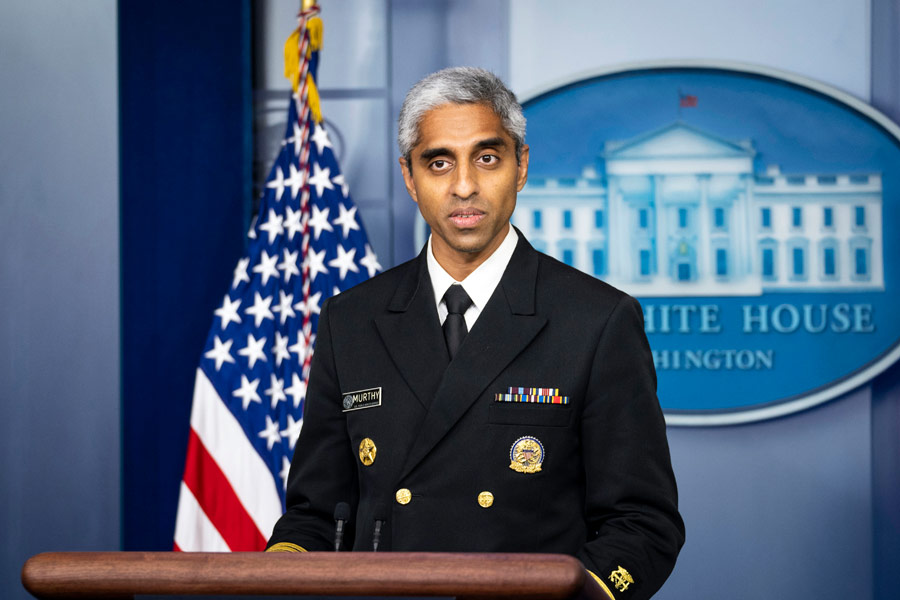On June 17, the US Surgeon General, Vivek Murthy, called for social media apps to come up with a warning label stating that their usage is associated with causing significant harm to the mental health of adolescents. He based his argument on evidence from tobacco studies which showed that warning labels can increase awareness and change behaviour. Murthy believes the use of warning labels would not make social media safe for young people, but would be a step in that direction.
“Why is it that we have failed to respond to the harms of social media when they are no less urgent or widespread than those posed by unsafe cars, planes or food? These harms are not a failure of willpower and parenting; they are the consequence of unleashing powerful technology without adequate safety measures, transparency or accountability,” he wrote in his opinion piece in The New York Times. But would warnings really be effective, given how easily they can be ignored? Would it actually be a step towards solving the problems caused by social media addiction? Is there a solution?
The Telegraph Online reached out to a number of young people across the country for their views on warning labels and their own experiences with social media. Here are excerpts of their responses, edited for clarity.
Lavanya Gupta (Lucknow): Need something like a nicotine patch
“I think of social media as a dynamic, shapeshifting entity which is beyond anything humans have created. I am wary of it and I feel all people should be,” she says. In her early twenties, Lavanya is a part of the generation that has seen a sudden shift from the physical to the virtual world. “It was so sudden, yet so subtle, until it was everywhere.” She feels warning labels would not be enough to reduce the addiction to social media. “More than tobacco labels, nicotine patches help because after the person has decided to let go of the habit, the patch helps them cope with the withdrawal. I think that’s what is required for social media, something like a nicotine patch, because it is undeniably going to be part of our existence,” she said.
Aahna Shah (Ahmedabad): Social media is good for work & marketing
“I feel warnings would not work. Tobacco packs do come with warnings. Still people use it. I doubt it would be any different with social media,” she said. Aahna’s experience with social media has been positive for the most part, she admits. “It does take up a lot of your time as you scroll through infinite content, but in terms of work and marketing, it works wonders,” she said. Perhaps her disciplined nature and good time management skills have helped.
Harshita Goyal (Chandigarh): Warnings must while downloading apps
“I think social media is both a boon and a bane. It allows you to maintain contact with people you know but don’t see everyday, provides information, entertainment, and helps in spreading positivity and love,” she said. Goyal, in her late teens, also acknowledged the negative role of social media _ a la, spread of fake news and hate – but emphasised the need for users to be judicious with it. She believes warnings related to social media usage should be given when downloading an app. “It might not help in a very significant way, but people will become more aware. They will think twice before believing what they see or hear on social media and might keep a check on how much time they spend scrolling through it,” she said.
Siya Arora (Ludhiana): Up to us to determine extent of use
“I don’t think behavioural addictions should come with warnings. By that logic, every item should have a warning plastered on it. And television too,” she said. Arora’s experience with social media has not been positive. “I never thought I would have a problem with the way certain parts of my face look, but social media changed that.” Being constantly exposed to filtered images of attractive people posing in flattering angles gave her body and facial dysmorphia, which is a mental disorder characterised by an overwhelming preoccupation with perceived flaws in one’s appearance. “Social media is a collective systemic problem which people profit off. Hence, I don’t see a solution to social media addiction. We can only make changes individually,” she said.
HP (Mumbai): Not convinced that warnings will even be read
“My experience with social media has been decent. I got to connect with a few people, and had some ups and downs,” they said (HP identifies as non-binary with preferred pronouns they/them). HP believes warnings on social media apps would be treated exactly like warnings on tobacco products are treated: completely ignored. “No one reads those warnings and no one cares. All of us are guilty of skipping over the terms and conditions. This would be the same,” they said. Moreover, HP is certain that given how the companies behind these platforms run, there won’t be much effort put into making sure that such warnings are posted in such a manner so that no one can miss them.
Souradeep Das (Kolkata): Limiting access to gadgets is the key
“If graphic, gory pictures of lungs damaged by cancer did not stop people from smoking, textual warnings on social media apps would be even more powerless,” he said. The twenty-year old believes the problem with social media is worsened by children gaining access to it at an early age. “The only way to effectively solve the problem would be to not let children have unsupervised access to electronic devices of their own until they are 18. Kids as young as three or four have their own mobiles and they grow up not knowing the dangers of navigating such platforms,” he said.
Conclusion: Let’s start with warnings, long-term studies can follow
The current generation of young people is the first to live in the digital age, where virtual worlds exist as entities independent of the physical world even as technologies such as AI and machine learning advance.
“Why is it that we have failed to respond to the harms of social media when they are no less urgent or widespread than those posed by unsafe cars, planes or food? These harms are not a failure of willpower and parenting; they are the consequence of unleashing powerful technology without adequate safety measures, transparency or accountability,” the US Surgeon General, Vivek Murthy, wrote in The New York Times. But would warnings really be effective, given how easily they can be ignored?
Yes. But they could be a starting point. To find more ways to navigate the impact of social media on adolescent minds, long-term studies would need to be conducted where the same sample of individuals are studied over a span of 10, 20 years, as they grow older, shaped by various factors.












